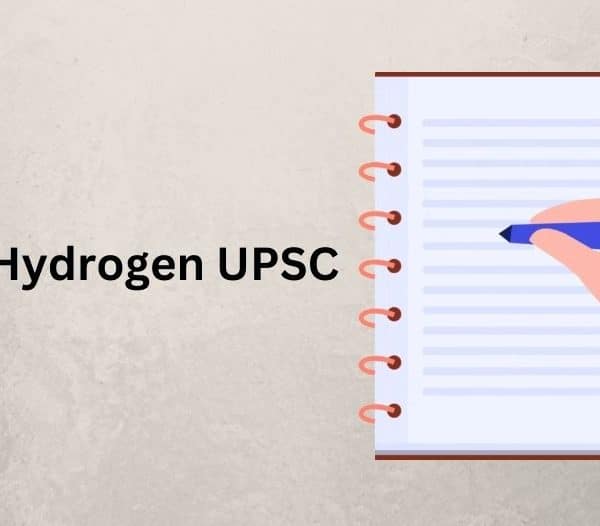Did you know Sarojini Naidu, the Nightingale of India, was the first female governor of an Indian state – Uttar Pradesh!?
The state executive constitutes the Governor, the Chief Minister, and the Council of Ministers. The question is, “Who appoints the governor of the state in India?” A governor of the state is appointed by the President of India for a term of five years.
A governor is the head of the state and is appointed for each state. However, Article 153 of the Indian Constitution allows a person to head two or more states. Article 154 grants the executive powers to the governor, “The executive power of the State shall be vested in the Governor and shall be exercised by him either directly or through officers subordinate to him in accordance with this Constitution.”
But who is the head of the state? The Governor is the nominal head while the Chief Minister is the executive head of a state and is required to take approval from the approval from the governor for executive actions. He/ she cannot appoint a judge of the High Court but can advise the President with the same.
Also Read : What is the Initial Public Offering Process (IPO) in India? The 7-step Process of Public Issue in India
Governor Appointment and Terms
Who Appoints the Governors of Union Territories?
According to Article 156, “The Governor shall hold office during the pleasure of the President.” The President of the country appoints Lieutenant governors in union territories. Lieutenant governors head U.T of Delhi, Andaman and Nicobar Islands, Puducherry, Jammu and Kashmir, and Ladakh. However, exceptional decisions can be taken if the situation demands otherwise. The Lieutenant governors of U.Ts hold the same authority as that of governors of the state.
Who Appoints the Governor of Jammu and Kashmir?
The President appoints all the governors and the Lieutenant governors of the states and union territories in India. As per the Jammu and Kashmir Reorganisation Act, 2019 of the Indian Constitution, the union territory’s special status has been revoked.
Eligibility
As per the Constitution of India, the eligibility criteria to serve as a governor of a state is:
- He/she must be a citizen of India.
- He/she must be above 35 years of age.
- He/she cannot hold any office of profit.
- He/she cannot be a member of Rajya Sabha or Lok Sabha.
- He/she cannot head their home state.
- He/she has to take an oath prior to starting the duty.
Article 159 states the oath as, “He has to swear in the name of God/ solemnly affirm that he “will faithfully execute the office of Governor (or discharge the functions of the Governor) of (name of the State) and will to the best of my ability preserve, protect and defend the Constitution and the law and that I will devote myself to the service and well-being of the people (name of the State).”
Terms of Service
The usual tenure of a governor in five years. However, in adverse situations, the President can order to either extend or reduce the tenure of the governor. The normal term can be terminated early if –
- i) The President dismisses the governor on the prime minister’s advice or in case he/she is found violating or disrespecting any law.
- ii) The Governor resigns from his duties. Although there are no defined retirement terms, a governor can resign before serving the term of five years.
Powers of the Governor
Legislative Powers
- The governor of a state addresses the first session at the state legislature every year.
- The governor outlines the new administrative policies of the state government.
- A governor is a part of the state legislature. Thus, he/ she has the right to address and send messages to summon, defer, and dissolve the state legislature.
- He/ she appoints the advocate general of a state.
- Once the governor approves a bill in the Legislative Assembly, it becomes a law.
- In case of urgency and absence of the legislative Assembly, the governor has the right to promulgate an ordinance. This ordinance is operative for six weeks until the legislature approves it.
Also Read : GST Explained: What Kind of Tax is GST (Goods and Services Tax)?
Judicial Powers
- The governor has the right to grant pardons, respites, reprieves, or remission of punishment.
- He/ she has the authority to suspend, remit, or commute the punishment of a convict.
- He/ she consults the President to appoint the High Court judges.
- By consulting the High Court, the governor has the authority to appoint, transfer, and promote judges of district courts.
Financial Powers
- The President governs the financial powers of the country. A governor commands the financial power of the state.
- He/ she administers the State Finance Commission.
- He/ she has to design the annual financial framework for the state. He/ she can demand grants and recommendations for the same.
- Governor approves the bills to be presented in the Assembly.
- The governor is the approving authority for all grants. Any other uninformed demands are dismissed.
- He/ she is the responsible body Contingency Fund of the State. He/ she has the right to make immediate transactions only in case of emergencies.
- The deputy Chief Minister or the Finance Minister submits the annual budget of a state with a detailed layout – estimate, the time required, bills, receipts, and expenditure in the name of the Governor.
Emergency Powers
- The governor has the authority to use his or her discretion in selecting the Chief Minister in case no political party is elected with a majority of votes.
- In case of an unforeseen emergency, the governor can impose “President’s Rule” on behalf of the President. However, he/ she has to draft a detailed official report to define his/her measures to tackle the situation.
- In such situations, the governor can override the advice from the Council of Ministers and direct the order himself.
Constitution of Indian Articles for Governor of a State
- 153 – Governors of states
- 155 – Appointment of Governor
- 156 – Tenure of Governor
- 157 – Eligibility
- 158 – Office terms
- 160 – Discharge of the functions in certain contingencies
- 161 – Authority to grant pardons and others
- 175 – Authority to address and send messages to the house/s of the state legislature
- 176 – Special address
- 201 – Bills reserved by the Governor for consideration of the President
- 213 – Authority to promulgate ordinances
- 217 – Advice to appointment the High Court Chief Justice
- 233 – Transfer and promote judges of the district court
- 234 – Other appointments (other than district judges) to the judicial service of the state
Interesting Fact
Did you know E.S.L. Narsimhan has been the longest-serving governor in India?
A report by ‘thenewsminute’ on Monday 2nd of September, 2019 mentions,
“The former chief of the Intelligence Bureau is the longest-serving Governor in India if his term as Chhattisgarh Governor is also taken into account. Narasimhan took office as Governor of Chhattisgarh in 2007 and 2009.
In January 2010, he was formally appointed as Governor of combined Andhra Pradesh, and after the formation of Telangana in 2014, he remained Governor for both the states.
With the Centre on Sunday appointing Tamilisai Soundararajan as the new Governor of Telangana, ESL Narasimhan’s long stint as Governor comes to an end.”
Conclusion
The governor of the state is one of the most important figures of all. He/ she takes care of multiple affairs of the state and works towards the betterment of the state. Aspirants who wish to pursue IAS or UPSC often keep this option in mind too.
Also Read : Best Career Options after 12th Arts: High Salary Courses after 12th Arts






